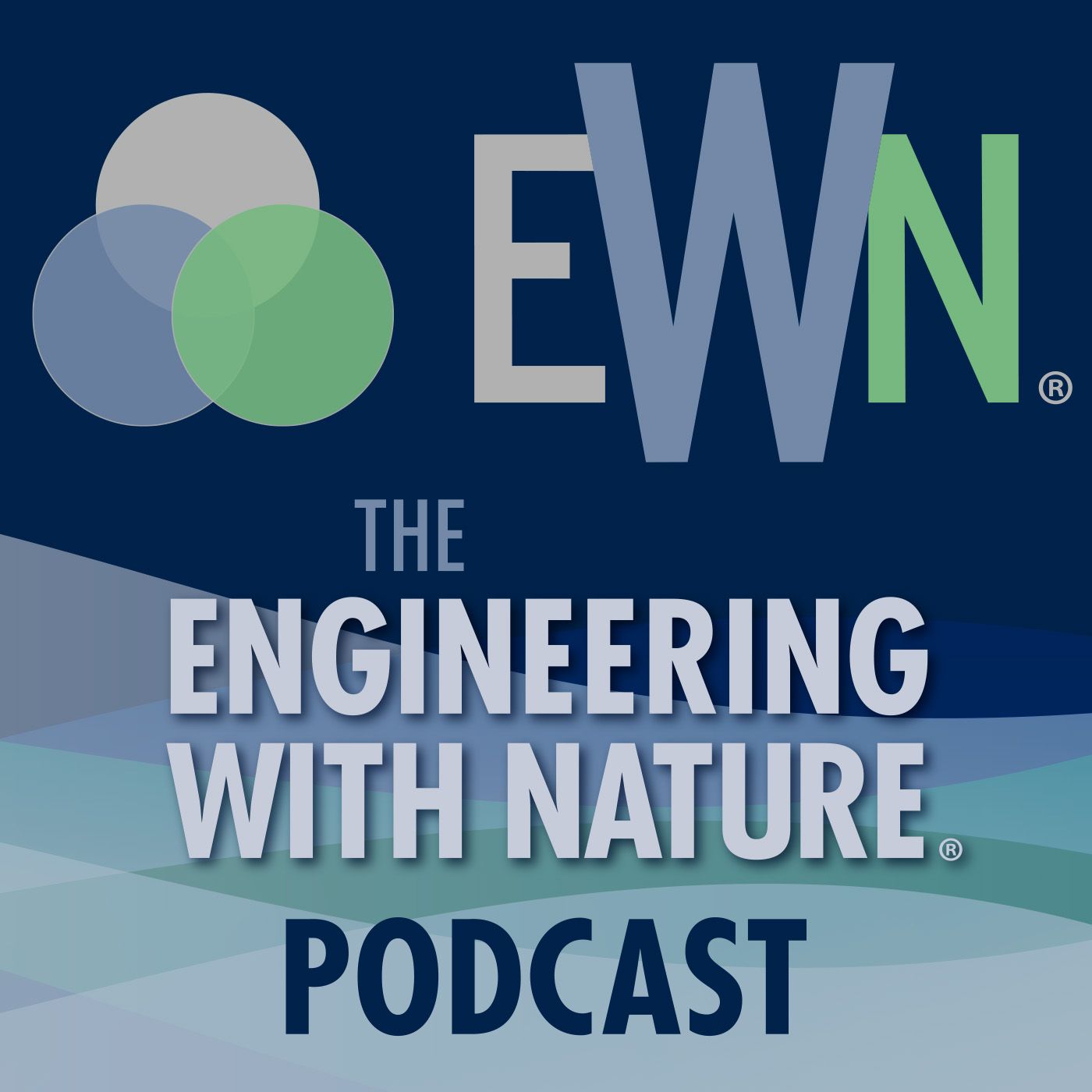ERDC Labs Collaborating on Leading Edge 3D Printing Nature-Based Solutions
Description
Imagine scientists and engineers using 3D printing technology to create nature-inspired structures and to produce more effective, economic, and aesthetically pleasing solutions. In the premier episode of Season 5 of the Engineering With Nature® Podcast, host Sarah Thorne, and Burton Suedel, Research Biologist at the Engineer Research and Development Center (ERDC), are talking with two ERDC colleagues - Alan Kennedy, who is in the risk branch of the Environmental Lab, and Zackery McClelland, who is in the concrete and materials branch of the Geotechnical and Structures Lab.
Additive manufacturing (AM) creates objects by adding material layer by layer through computer aided design. This contrasts with traditional, or subtractive manufacturing that starts with something larger and chips away at material to create the final product. 3D printing is a subset of the larger AM field. Applying AM to Engineering With Nature (EWN), creates an opportunity to go beyond the conventional approaches that use steel and rock, to achieve the multiple social, economic and environmental benefits that are an objective of EWN.
The use of 3D printing unlocks the ability to make complex, overlapping, nature-inspired geometries that are impossible to make with traditional methods. This allows mimicking natural, asymmetric structures such as coral-like stubs and mangrove roots. These structures can provide habitat enhancements and erosion controls, while being aesthetically pleasing in recreational areas. They can also blend and composite synthetic and natural biopolymers. This allows scientists to tune the material’s structure and mechanical properties, as well as its surface chemistry and porosity for whatever the site-specific need or application may be.
These advances can be thought of as a natural evolution of collaborative thinking which is key to the ERDC culture and are emerging, in part, related to the reduced costs and improved user friendliness of the 3D printing equipment, plus recent capital investments made at all three ERDC labs. Novel 3D printing technologies that can use natural materials such as sand and clay, have the potential to incorporate beneficial use of dredge material as a feed stock for 3D printing.
While there are lots of hobbyists, universities and even companies doing 3D printing, the application at the Army Corps in an infrastructure context is unique and the potential for beneficial use of dredge material can be a real game changer. One of the goals of work in this area is to make additive manufacturing a mission enabler for novel solutions by creating interagency partnerships and making use of natural materials standard at EWN Proving Grounds. As Burton notes: “By combining the efforts of the Geotechnical Structures Laboratory and the Environmental Laboratories, bringing together the disparate disciplines, we're going to learn a lot from each other and we're going be able to accomplish more in this space. From an EWN perspective, there are a lot of applications for this type of research and this type of capability.”
For more information, please visit the EWN Podcast page on the EWN website at https://www.engineeringwithnature.org/
Related Links
Burton Suedel at LinkedIn Alan Kennedy at LinkedIn Environmental Laboratory, ERDC Zackery McClelland at LinkedIn Geotechnical and Structures Lab, ERDC
More Episodes
In Season 8, Episode 3, host Sarah Thorne and Amanda Tritinger, Deputy National Lead of the Engineering With Nature (EWN) Program, US Army Corps of Engineers (USACE), are joined by Brian Davis, Associate Professor of Landscape Architecture at the University of Virginia (UVA), and Cathy Johnson,...
Published 10/22/24
Published 10/22/24
In Season 8, Episode 2, host Sarah Thorne and Jeff King, National Lead of the Engineering With Nature (EWN) Program, USACE, welcome back Dr. Christopher Lemon, a physician and Assistant Professor, Department of Emergency Medicine at Johns Hopkins Medicine; Faculty Codirector of Clinical Programs...
Published 10/08/24


